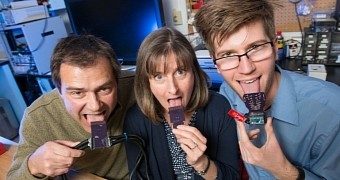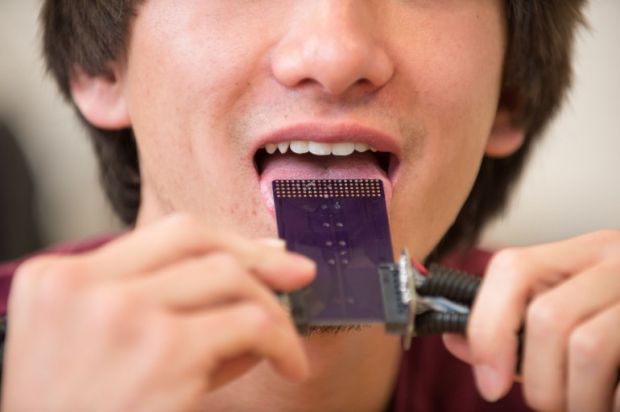Being deaf may not be quite as disabling as being blind, but it is still far from the best way of living, which is why plenty of people are trying to heal or otherwise compensate for it. A group of researchers from CSU, however, have an idea that is completely off-the-wall.
CSU is short for Colorado State University, where a team led by Prof. John Williams has created a device that allows people to hear through their tongues.
Yes, that is the concept behind the electric retainer created at CSU. The device transmits spoken words to the user by buzzing their tongue.
Needless to say, this project and cochlear implants have almost nothing in common, save perhaps the use of external microphones.
Cochlear implants have some microphones set up next to the ear, and after filtering it through a speech processor, they pick up the sound of human speech and convert it into electrical impulses which are then transmitted through the user's skin to electrodes implanted in the cochlea.
It is those electrodes that stimulate the auditory nerves and actually allow deaf people to hear when people speak.
The tongue-tying mouthpiece
While this item still uses a microphone-equipped earpiece, that is where the similarities between it and cochlear implants end.
Sounds are still converted into electrical signals, but those signals are sent to the mouth retainer via Bluetooth.
Users press their tongue up against the device in order to have their nerves selectively stimulated by the series of electrodes on that side of the pad. The tongue nerves haven't been fully mapped yet, but that's a work in progress that will eventually conclude.
Users will still have to be trained to associate patterns with words, much like one would learn to read Braille by touch.
Advantages and disadvantages
That this isn't actual “hearing” is obvious. Also, the sheer bizarreness of the concept will probably put people off, or at least leave them bemused for a while.
However, the mouthpiece can be used without the patient having to get through a surgery, and ought to be a lot cheaper than cochlear implants as well. It would also offer a way to “listen” to people speaking even if the auditory nerve isn't functional.
Unfortunately, it's hard to say when the technology will be ready for wide use. It could take years to map all the tongue nerves and figure out which parts are more receptive to stimulation.

 14 DAY TRIAL //
14 DAY TRIAL // 

